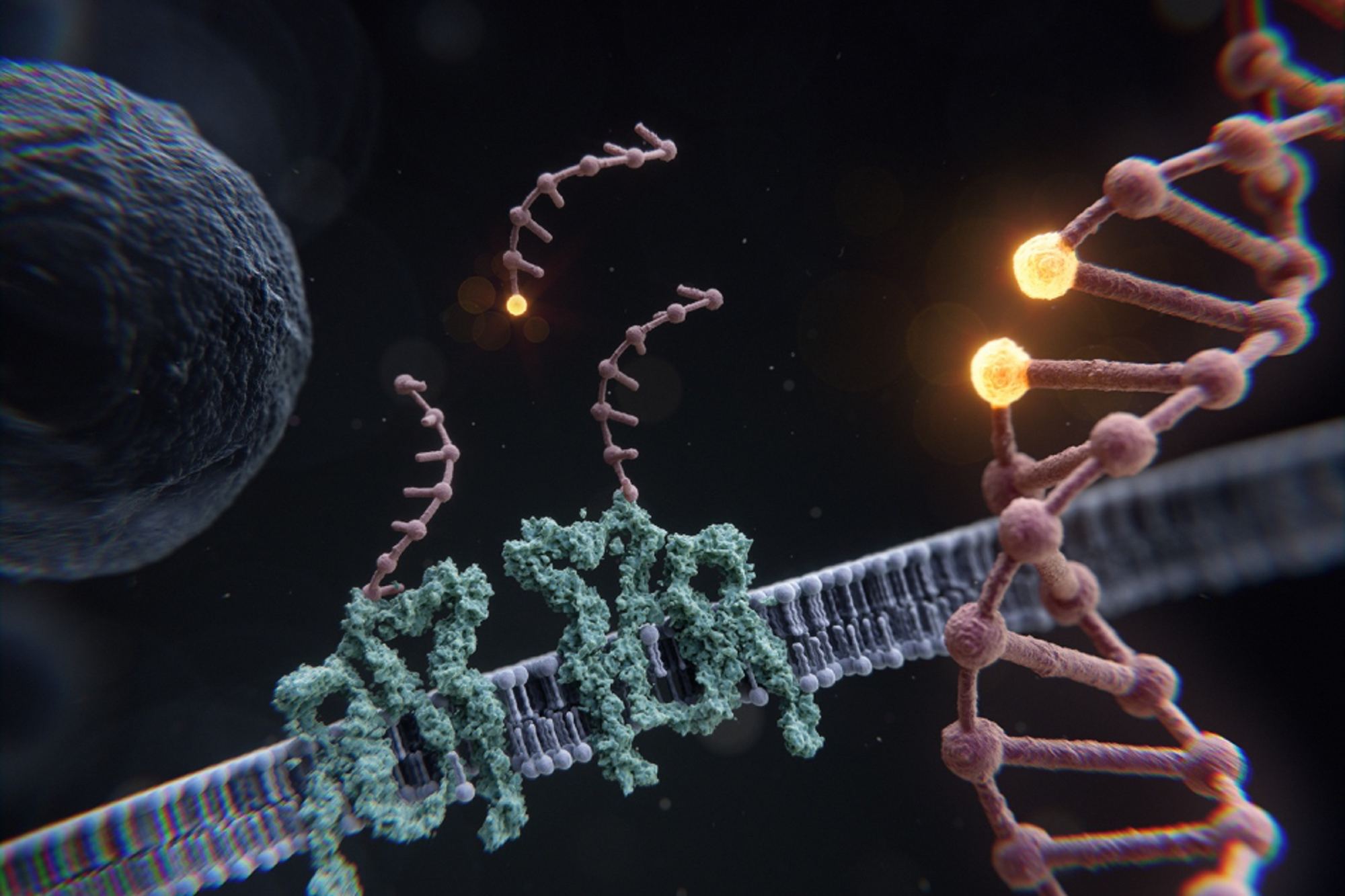At the Ludwig Maximilian University of Munich (LMU), a research team headed by physicist Ralf Jungmann is utilizing a new method to improve fluorescence microscopy to the Ångstrom scale—considerably less than the resolution limit of traditional light microscopy.

RESI enables microscopy across length scales at Ångström resolution down to the distance between two adjacent bases in DNA. Image Credit: Max Iglesias
The research group of Professor Ralf Jungmann at LMU and the Max Planck Institute of Biochemistry (MPIB) was able to achieve a new discovery in fluorescence microscopy. The team came up with the Resolution Enhancement by Sequential Imaging (RESI), a revolutionary method that improves the resolution of fluorescence microscopy down to the Ångström scale.
This creation is poised to escort a paradigm shift in the approach to studying biological systems with thus far unparalleled detail.
Cells, known to be the basic units of life, consist of a plethora of intricate structures, processes, and mechanisms that uphold and perpetuate living systems. Several cellular core components, like RNA, DNA, proteins, and lipids, are only a few nm in size.
This makes them significantly smaller compared to the resolution limit of conventional light microscopy. The correct composition and arrangement of such molecules and structures are thus frequently unknown, leading to a lack of mechanistic understanding of basic concepts of biology.
In the past few years, super-resolution methods have created leaps and bounds to resolve several sub-cellular structures below the classical diffraction limit of light. Single-molecule localization microscopy, otherwise called SMLM, is a super-resolution method that has the potential to resolve structures on the order of 10 nm in size by temporally isolating their fluorescence emission.
As individual targets stochastically light up (they blink) in a different dark field of view, their location could be identified with sub-diffraction accuracy. DNA-PAINT, invented by the Jungmann group, is an SMLM method that utilizes transient hybridization of dye-labeled DNA “imager” strands to their target-bound complements to obtain the essential blinking for super-resolution. But so far, even DNA-PAINT has not been able to resolve the smallest cellular structures.
RESI Can Be Applied Using Any Standard Fluorescence Microscope
In the present study headed by co-first authors Susanne Reinhardt, Luciano Masullo, Isabelle Baudrexel, and Philipp Steen collectively with Jungmann, the team initiates a novel method in super-resolution microscopy that allows fundamentally “unlimited” spatial resolution.
The new method, known as “Resolution Enhancement by Sequential Imaging,” or RESI for short, capitalizes on the potential of DNA-PAINT to encode target determine through special DNA sequences.
By labeling adjacent targets, that are too close to each other to be resolved even by super-resolution microscopy with various DNA strands, an extra degree of differentiation (a barcode) has been initiated into the sample.
By sequentially imaging the first one and then the other sequence (and thereby target), they could be isolated unambiguously.
Crucially, as they have been imaged sequentially, the targets could be arbitrarily close to each other, something no other method could resolve. Moreover, RESI does not need specialized instrumentation, it could be employed with the help of any standard fluorescence microscope, thereby making it accessible easily for nearly all scientists.
To illustrate RESI’s leap in resolution, the team set themselves the difficulty of resolving one of the smallest spatial distances in a biological system: The isolation between individual bases together with a double helix of DNA, spaced less than 1 nm (a billionth of a meter) separately.
By designing a DNA origami nanostructure such that it exhibits single-stranded DNA sequences that project from a double helix at one base pair distance and further imaging such single strands sequentially, the research group resolved a distance of 0.85 nm (or 8.5 Ångström) between adjacent bases, an earlier unimaginable feat.
The scientists accomplished such measurements with an accuracy of 1 Ångström, or one ten-billionth of a meter. This helps underscore the unparalleled abilities of the RESI method.
“A Game-Changer for Biological Research”
Significantly, the method is universal and not restricted to applications in DNA nanostructures. To this end, the team analyzed the molecular mode of action of Rituximab, an anti-CD20 monoclonal antibody that was initially approved in 1997 for the treatment of CD20-positive blood cancer.
But examining the effects of such drug molecules on molecular receptor patterns has been beyond the spatial resolution abilities of traditional microscopy methods. Comprehending whether and how such patterns alter health and disease as well as upon treatment is not only significant for fundamental mechanistic research but also for developing novel targeted disease therapies.
With the help of RESI, Jungmann and his team were able to disclose the natural arrangement of CD20 receptors in untreated cells as dimers and reveal how CD20 re-arranged to chains of dimers upon drug treatment. The knowledge on the single-protein level currently helps to gain insights into the molecular mode of action of Rituximab.
As RESI is executed in whole, intact cells, the method closes the gap between purely structural methods like X-Ray crystallography or cryogenic electron microscopy and conventional lower-resolution whole-cell imaging methods.
Jungmann and his research group are convinced that “this unprecedented technique is a true game-changer not only for super-resolution but for biological research as a whole”.
Journal Reference:
Reinhardt, S. C. M., et al. (2023) Ångström-resolution fluorescence microscopy. Nature. doi.org/10.1038/s41586-023-05925-9.